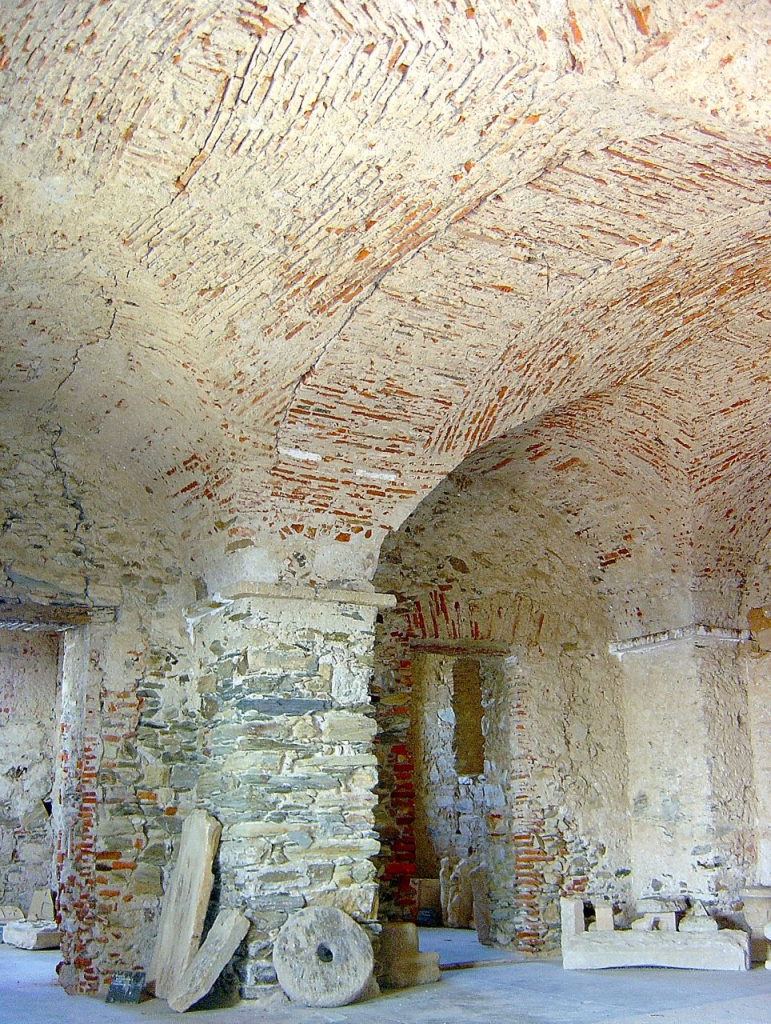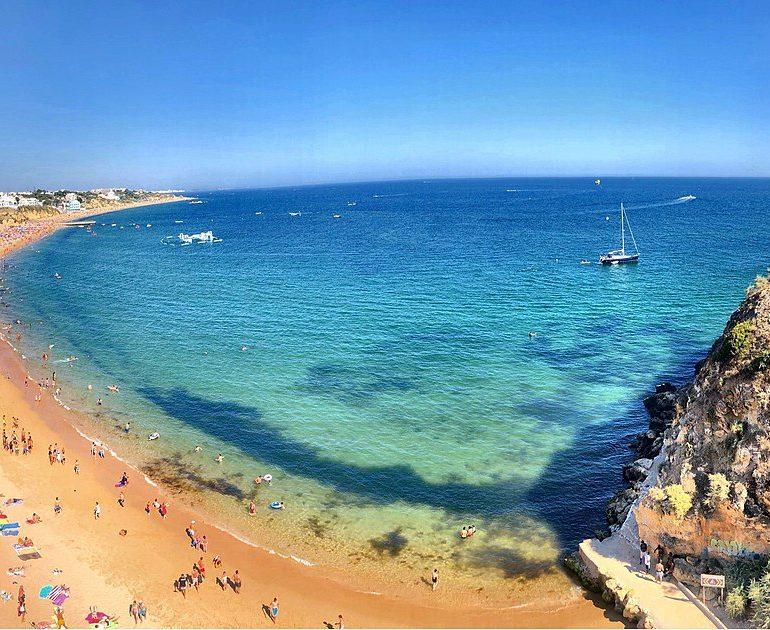Rising proudly above the Tagus River on a hill that once held strategic command over central Portugal, Abrantes Castle is a forgotten sentinel of centuries past. While Lisbon and Sintra often steal the spotlight, the quiet power of Abrantes offers something different—history without the crowds, views that go on forever, and a sense of rootedness that only places shaped by war, royalty, and resilience can provide.

Let’s take a journey into the heart of Ribatejo, where stones still whisper stories and where the air itself seems to carry the weight of medieval watchfulness. This is the story of Abrantes Castle—not just as a monument, but as a living memory of Portugal’s soul.

The First Impressions: A Fortress With a View
Approaching Abrantes from any direction, your eyes are naturally drawn uphill. The old town clings to the slope, rising gently to the crown of the hill where the castle sits like a stone guardian. But this isn’t just any lookout point—it’s a natural stronghold. And the architects who first built here knew it.
The Tagus River, once the lifeblood of inland trade and troop movements, winds far below. From the ramparts, you can see as far as Serra da Estrela on a clear day. The sense of height and space is vast. But the castle itself is intimate—more like a weathered old general than a showy prince. It’s solid, scarred, and rooted in place.

A Brief History: From Reconquest to Napoleon
Abrantes Castle traces its origins back to the 12th century, during the fervour of the Christian Reconquest. The site, previously settled by Romans and later fortified by the Moors, was retaken in 1148 by Afonso Henriques, the first King of Portugal. Recognising its strategic importance, he ordered the construction of a Christian fortification almost immediately.
Over the centuries, the castle was expanded and modified—particularly during the reign of King Dinis in the 13th century, who reinforced its military role with added walls and towers. It became one of the key defensive bastions guarding the Tagus corridor, a vital artery leading straight to Lisbon.
But it wasn’t just soldiers who walked these walls. In the 17th and 18th centuries, parts of the castle were transformed into a royal residence. It served as a noble retreat, complete with gardens and quarters fit for visiting dignitaries.
That all changed in 1807, when Napoleon’s armies crossed into Portugal. Abrantes was seized by General Junot, who made it his headquarters for a time, so much so that he was later awarded the title Duke of Abrantes by Napoleon himself. While the French left eventually, the scars of occupation lingered in the town’s memory.


Wandering the Grounds: What to See
Despite the layers of history, Abrantes Castle is not a museum in the traditional sense. There’s no single entry gate with a ticket booth, no roped-off galleries. Instead, you arrive and wander. You pass through stone arches and crumbling walls, discover viewpoints where soldiers once stood watch, and find corners where time seems to pool in the shadows.
Here’s what to pay attention to:
1. The Keep (Torre de Menagem)
The keep is the heart of the castle, though only parts remain today. Once the last refuge during sieges, it now offers a window into medieval engineering. Climb what’s left of the walls for panoramic views of the Ribatejo plains.
2. Military Quarters and Barracks
You’ll notice a few long, low buildings set back against the inner walls. These were 17th-century barracks, built to accommodate the troops stationed here to defend the kingdom’s interior. They’re unadorned, but somehow still commanding. It’s easy to imagine the clatter of boots and barked orders in the chilly morning fog.
3. The Church of Santa Maria do Castelo
This 13th-century church within the castle walls is one of the most atmospheric spots. Once the castle’s spiritual centre, it’s now a simple stone structure with Gothic arches and a sense of stillness that’s rare. Outside, a small cemetery holds the graves of local notables and soldiers.
4. The Garden Terraces
In the 18th century, when the fortress also served as a royal retreat, terraces and gardens were added. You’ll find manicured hedges and trees that feel almost too gentle for a place with such a militant past. They offer a soft balance—proof that even battle-worn walls can bloom.
Best Times to Visit
Abrantes Castle is open year-round, but it’s most rewarding in spring and early autumn. The Ribatejo region basks in golden light, and wildflowers carpet the hillsides from March through May. In late September and October, the weather cools and the harvest gives the town a lively hum.
Avoid high summer unless you’re prepared for heat. The stone absorbs and radiates sun like a furnace. If you do go in July or August, aim for early morning or late afternoon—and bring water.
Making a Day of It: What to Pair With the Castle
Abrantes Castle can be explored in an hour or two, but the town itself is worth lingering in.
Stroll Through the Old Town
Wander downhill into the historic centre, with its cobbled streets, whitewashed façades, and wrought-iron balconies. Stop at a café for a bica (Portuguese espresso) and take in the rhythm of a town that still moves at its own pace.
Museu D. Lopo de Almeida
Set just outside the castle, this museum offers a more structured take on local history. It holds archaeological finds from the region, religious art, and even a few curious Napoleonic artefacts. It helps place the castle in the broader story of Portugal’s interior.
Tagus Riverside Walk
Down by the river, you’ll find quiet paths perfect for walking or cycling. The town has invested in recent years in making the riverfront accessible and beautiful, and it’s a peaceful contrast to the hilltop heights.
Food and Drink: Where to Refuel
One of the best things about visiting small-town Portugal is the food. No fuss, no frills—just honest plates made with love and local pride.
- Santa Isabel – A local favourite near the old town, serving seasonal Ribatejo cuisine like cabrito assado (roast goat) and ensopado de borrego (lamb stew).
- O Alpendre – A more rustic option, with hearty portions and a terrace. Go for the bacalhau à lagareiro or grilled meats.
- Pastelaria Palha de Abrantes – Stop here for the town’s famous sweet: the Palha de Abrantes. It’s a golden, delicate dessert made from egg threads and almonds, rooted in the conventual sweets tradition. You won’t find this in Lisbon.
Pair it with a local wine from the Tejo region, or try the traditional ginjinha (cherry liqueur) if you’re in the mood for something stronger.
Why It’s Worth Your Time

Let’s be honest—Abrantes Castle isn’t going to wow you with glittering palaces or pristine restoration. This is not the Pena Palace. And that’s precisely why it matters.
This is a place where the stones are still allowed to breathe, to decay naturally, and to remind you of what they’ve seen. It’s unpolished. Raw. Real.
For travellers tired of the tourist loop, or for those who want to get deeper into Portugal’s layered identity, Abrantes offers something that can’t be bottled or sold in a brochure: presence. The kind of stillness you only get when time is allowed to take root.
Final Thoughts: A Place Between Worlds
There’s something magnetic about standing on the ramparts of Abrantes Castle. You feel caught between land and sky, between the past and the present. The wind carries the memory of war, and yet the sun warms the ancient stones like an old friend.
Abrantes may not be on your list yet—but it should be. Because sometimes, it’s in the quieter places, the overlooked corners, where the true pulse of a country beats.
Practical Tips
- Getting There: Abrantes is just under 2 hours from Lisbon by car or train. The train station sits below the town centre, so prepare for an uphill walk or take a short taxi ride.
- Entry: Free to wander. The church and museum may have limited hours; check locally.
- Accessibility: The castle grounds are uneven and partially unpaved. Not ideal for limited mobility visitors.
- Language: English is spoken in some places, but a few words of Portuguese go a long way.


